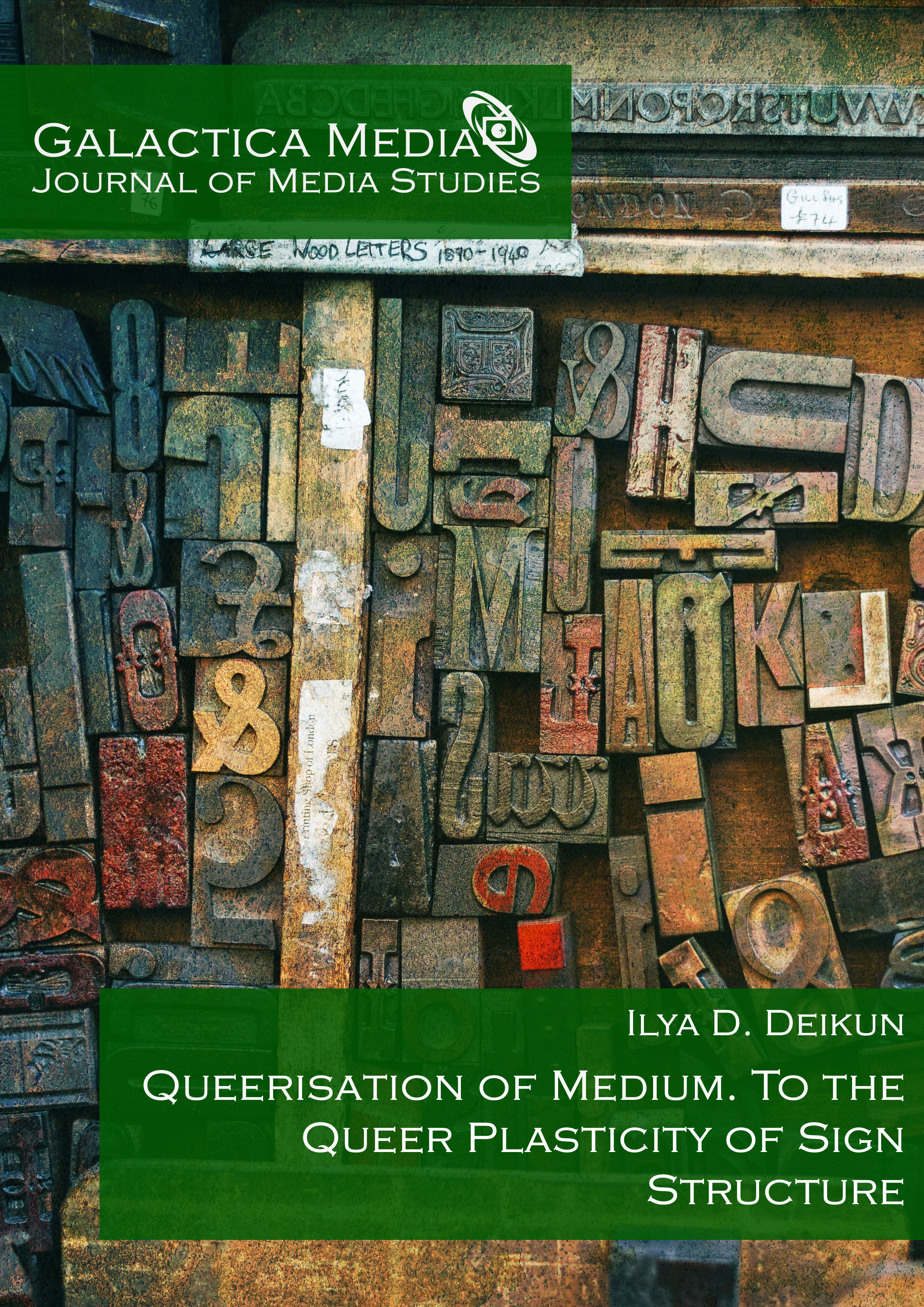Abstract
This article focuses on the study of emancipatory strategies and reveals contradictions between the rhetorical strategy in the Cyborg Manifesto and its pragmatics, on the one hand, and the discrepancy between the content and the social reflection of the concept of “multiple gender” developed by Judith Butler in Gender trouble, on the other. The author started to unfold this problematic in the paper Fleeing Queer (Vita Cogitans, 2019).
The author argues that the main reason for these contradictions is the inherent neglect of sign-medium specificity by structuralists. Following the criticism initiated by Regis Debray who proposes a new vision of sing focused on its materiality, the author outlines a way to the range of genres which seems to be more adequate to the rates of Cyborg Manifesto and proposes to consider practices which save the room for multiplicity and indeterminacy in the sense of Bergson, Matière et Mémoire, on the level of sign-medium. From this perspective the sign-medium continuum makes us seek for what we could indicate as “queerisation of medium”. We show the corresponding possibilities on the example of the alphabet and writing invented by a Moscow artist Anya Belousova.
References
Arns, I. (2005). Code as performative speech act. Artnodes, 0(4). https://doi.org/10.7238/a.v0i4.727
Atkin, A. (2013). Peirce's Theory of Signs. In The Stanford Encyclopedia of Philosophy, Edward N. Zalta (ed.). Retrieved from https://plato.stanford.edu/archives/sum2013/entries/peirce-semiotics
Austin, J. (1962). How to do things with words. London, UK: Oxford at the Clarendon Press.
Balogun, L. (2018). Poetics of mnemonic strategy : the art of adaptation and the spirituality of being & things in Tunde Kelani’s Saworoide and The Narrow Path. Journal of African Films & Diaspora Studies, 1, 53-74. doi: 10.31920/2516-2713/2018/v1n1a4.
Barthes, R. (1964). Elements of semiology. Communications 4, Paris, France: Seuil. (in French)
Butler, J. (1990). Gender Trouble: Feminism and the Subversion of identity. New York - London, NY, UK: Routledge, Chapman & Hall, Inc.
Callis, S. (2009). Playing with Butler and Foucault: Bisexuality and Queer Theory. Journal of Bisexuality, 9:3-4, 213-233. doi: 10.1080/15299710903316513
Casey, E. (1987). Remembering: phenomenological study. Bloomington, IN: Indiana University press.
Debord, G. (1992). La Société du Spectacle. Paris, France: Les Éditions Gallimard.
Debray, R. (1996). Media Manifestos. On the Technological Transmission of Cultural Forms, E. Rauth (trans.). London - New York, UK, NY: Verso.
Drescher, J. (2007). From bisexuality to intersexuality: Rethinking gender categories. Contemporary Psychoanalysis, 43(1), 204–228. doi: 10.1080/00107530.2007.10745905
Epstein, S. (1987). Gay politics, ethnic identity: The limits of social constructionism. Sociologist Review, 17(3/4), 9–54.
Epstein, S. (1994). A queer encounter: Sociology and the study of sexuality. Sociological Theory, 12(2), 188–202.
Foster, H. (2002). Design and Crime (And Other Diatribes). London - New York, UK, NY: Verso.
Grésillon, A. (1988). Literary manuscripts: the text in all its forms. Practices: linguistics, literature, didactics, (57), 107-122. doi: 10.3406/prati.1988.1477 (in French)
Haraway, D. & Wolfe, C. (2016). Manifestly Haraway. Minneapolis, MN: University of Minnesota Press.
Jameson, F. (1990). Cognitive Mapping. In C. Nelson & L. Grossberg (Eds.), Marxism and the Interpretation of Culture (pp. 347-60). Champaign, IL: University of Illinois Press.
Johnson, P. (2001). “Quare” Studies, or (Almost) Everything I Know about Queer Studies I Learned from My Grandmother. Text and Performance Quarterly. 21, 1-25. doi 10.1080/10462930128119.
Kuznetsov, V. (2017). Conceptual Plasticity as a Postclassical Way to Conceptualize the Elusive Unity of the World. RUDN Journal of Philosophy. 21(2), 213-221. doi 10.22363/2313-2302-2017-21-2-213-221 (in Russian)
Saussure, F. (1966). Course in General Linguistics, W. Baskin (trans.). New York, NY: McGraw-Hill.
Simondon, G. (1989). The mode of existence of technical objects, J. Hart (pref.), Y. Deforge (postf.). Alençon, France: Aubier. (in French)
Todorov, T. (1975) The Fantastic a Structural approach. Ithaca, NY: Cornell University press
Zucchi, A. (2012). Formal Semantics of Sign Languages. Language and Linguistics Compass, 6. Doi 10.1002/lnc3.348.

This work is licensed under a Creative Commons Attribution 4.0 International License.

